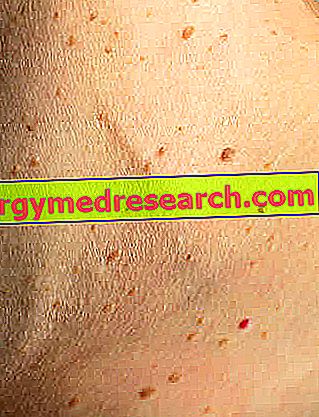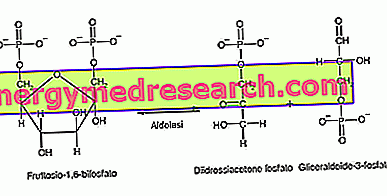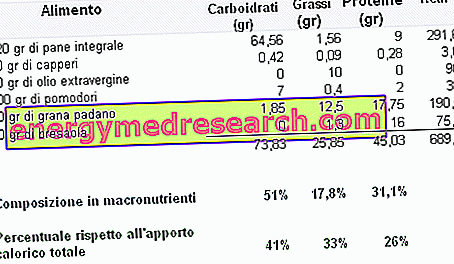What is Phosphatidylcholine?
Phosphatidylcholine is a phospholipid known and studied for a very long time, as it is abundantly represented in nature and introduced daily through various foods (soy lecithin, liver and egg yolk are particularly rich).

Phosphatidylcholine consists of a phosphate group, 2 fatty acids and choline, precursor of acetylcholine. Having a hydrophilic head and two lipophilic tails it enjoys amphipathic properties.
The nutritional role of phosphatidylcholine is very important, so much so that it is abundantly used in the food industry (as an emulsifying agent) and dietetic (as a useful supplement to lower cholesterol and promote liver and brain efficiency).
In the human body, phosphatidylcholine is one of the main components of the plasma membrane, of which it regulates fluidity, integrity and permeability.
The extraordinary virtues of phosphatidylcholine - exploited in the medical field in the treatment of hyperlipidemias and hepatic diseases - derive from its amphiphilic nature, which allows it to keep the fats in solution in the blood and in other organic fluids (which in itself are aqueous solutions, therefore immiscible with lipids just like water and oil).
Beyond these traditional uses, phosphatidylcholine injections are becoming one of the most popular techniques for getting rid of localized fat, thus earning a place in the world of aesthetic medicine.
Phosphatidylcholine and Lipodissolve
The use of phosphatidylcholine in the treatment of localized adiposity is quite recent, but not for this reason without efficacy.
The first to propose it, in the mid-1990s, was a Brazilian doctor after a brilliant intuition: if it is true that phosphatidylcholine is able to dissolve the fat with which it comes into contact, why not use it to eliminate small fatty deposits and treat edematous-fibrosclerotic panniculopathy * using mesotherapeutic techniques ** ?.
[(*) medical term synonymous with cellulite; (**) technique for injecting drugs into the dermis]
In fact, if injected directly into adipose tissue through very fine needles, phosphatidylcholine is able to solubilize fats, reducing the volume of the cells that contain them (adipocytes). The technique, carried out in an outpatient and poorly invasive regime, is called Lipodissolve, in honor of the well-documented action of phosphididylcholine. This effect is particularly useful in the treatment of fatty deposits that, either for endocrine and metabolic factors, or for a sedentary lifestyle, are particularly resistant to traditional dietary and behavioral interventions. Lipodisolve therefore represents a new and effective weapon in the war of localized adiposity and cellulite, even when such imperfections are localized in critical points, such as the abdomen, the inner thigh, the coulotte de cheval and the hips; good results can also be obtained in the treatment of fat deposits in the lower eyelid, double chin and cheeks.
Advantages
What are the advantages of the Phosphatidylcholine-based Lipodissolve technique?
Considering the premises, the advent of phosphatidylcholine in the aesthetic sector has been welcomed as a real revolution, able to send the traditional liposculpture to early retirement (surgical technique based on aspiration of excess fat through cannulas connected to an aspiration pump). Contrary to this last intervention, which represents a real surgical operation to be performed with the utmost care to avoid complications, the Lipodissolve technique has proved to be free of significant side effects.
Furthermore, since it is a non-invasive technique, the injection of phosphatidylcholine to eliminate cellulite and localized fat
The result obtained can be improved with the combination of carnitine (an amino acid necessary to transmit fatty acids into the mitochondria), deoxycholic acid (a bile salt) and other substances capable of improving the health of the microcirculation and limiting the adverse reactions (anti-inflammatories and painkillers).
Furthermore, the simultaneous injection of several active ingredients opens the way to further and interesting developments; one of these has already become a reality with the name " Lipodissolve Evolution ". In fact, this technique involves the injection of multiple substances (such as vitamins, mineral salts, amino acids, theophylline, etc.) at the areas characterized by fat accumulation or skin laxity. These substances would then be able to determine a reduction in the volume of adipocytes, with a consequent reduction in localized fat associated with an improvement in microcirculation, elasticity and skin tone.
Disadvantages
What are the disadvantages of phosphatidylcholine injection?
The effectiveness of phosphatidylcholine is limited to the treatment of superficial and not excessive adipose volumes, for which the surgical technique of liposuction remains the most effective solution. Furthermore, the injection is not free from drawbacks; in the aftermath of the session, the treated areas may become slightly inflamed, sore or punctuated by swelling. In rare cases we observe the appearance of small nodules and hematomas, which still tend to regress within a few weeks.
In any case, the treatment of localized fat and cellulite cannot be standardized and the most suitable technique is chosen based on individual characteristics (sensitivity or allergy to specific substances or treatments, stage and characteristics of the problem, etc.).
Furthermore, often, cellulite and small rolls represent multi-factor imperfections which - as such - require the combination of targeted interventions. An example is given by the use of graduated compression stockings which, combined with oral or topical intake of draining and lipolytic active principles, is synergistic with the action of phosphatidylcholine and helps to speed up the results.
All this to remember that, when we talk about phosphatidylcholine, we must be careful and avoid giving in to easy enthusiasms or excessive expectations.
The fight against the extra pounds is fought first of all, and without any contraindication, with a healthy and regular physical activity, adequate nutrition and optimal management of stress and the more or less pleasant situations that everyday life offers us .
Contraindications
Although the injection of phosphatidylcholine to counteract cellulite and localized fat is a highly appreciated aesthetic medicine technique, it does present a series of contraindications.
In fact, the phosphatidylcholine injection is contraindicated:
- In juvenile patients;
- In pregnant women or during breastfeeding;
- In complicated diabetics;
- In infectious patients;
- In immunosuppressed patients;
- In individuals allergic to the same phosphatidylcholine or soy;
- In patients with hepatic insufficiency and / or renal failure;
- In patients suffering from obesity;
- In patients with bleeding disorders and / or menstrual changes.
Future innovations
Given the great success of the Lipodissolve and Lipodissolve Evolution techniques, research into the fight against cellulite and localized fat is continuing to move, always proposing new solutions, in order to make the treatment with phosphatidylcholine even less invasive and annoying for the patient.
In this regard, further innovations could lead to the definitive replacement of needles with equipment capable of inducing the penetration of substances through the electrochemical opening of specific intracellular channels.
To overcome the various problems of the injection pathway, special cosmetics have also been proposed such as gels and single - use patches based on phosphatidylcholine and other draining, lipolytic and vasoprotective active ingredients. These include caffeine, centella, equisetum, escin, antioxidant agents, moisturizers, emollients and some marine algae.



